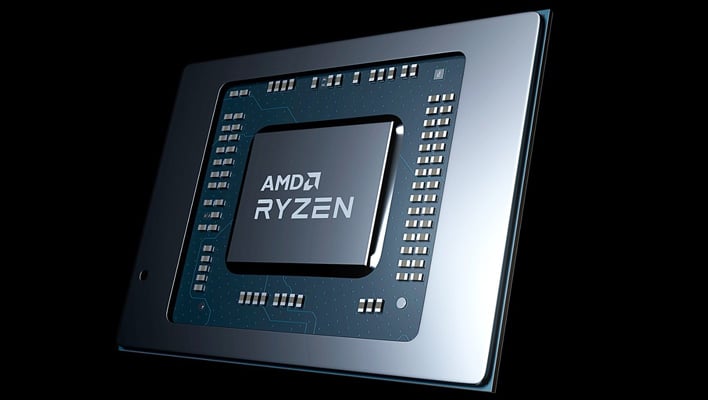AMD Readies Phoenix Hybrid APUs With Efficiency And Performance Cores

The hybrid Phoenix APUs are said to use a mix of “big” Zen 4 cores for heavy lifting and “small” Zen 4C cores to chip away at background tasks. The idea sounds similar to Intel’s asymmetric approach used since Lakefield, but a new leak highlights just how much AMD is mirroring its rival.
#AMD in the Phoenix1 Processor Programming Reference (PPR) uses the same phraseology for the big and little cores as #Intel https://t.co/4gWXpC8Bkg https://t.co/2RbTR2DRWV pic.twitter.com/8JmBB0RIzt
— InstLatX64 (@InstLatX64) March 24, 2023
We do not yet fully know how a Zen 4C core differs from its full Zen 4 counterpart. Beyond these mobile chips, we know the Zen4C architecture will also find its way into AMD’s Bergamo datacenter chips. Bergamo is tipped to deliver up to 128 Zen 4C cores (256 threads) in a single socket for Cloud Native applications which prefer high core count availability over individually performant cores. These qualities make Zen 4C similarly suited as catch-all cores for a laptop’s background tasks, where lower power consumption directly translates to improved battery runtime.
InstLatX64 infers that Zen 4C and Zen 4 could be more alike than Intel’s Performance and Efficiency cores. “It seems for the half size Zen4c AMD is sacrificing just the half of L3 and some frequency,” the tipster stated in a follow-up tweet. InstLatX64 also notes that a Zen 4 core is about double the physical size of a Zen 4C core, while Intel’s P-core is approximately 3.5 times larger than its E-core.
AMD’s strategy of maintaining two mostly similar cores could prove advantageous. Intel’s Efficiency core is based off Gracemont, and lacks some features found in the Golden Cove derived Performance cores. Most notably, AVX-512 is disabled in the company’s 12th and 13th Gen desktop processors despite physical support in the P-cores (AVX-512 is enabled in Intel’s all P-core Xeon Scalable CPUs). AMD’s presumed delineation would leave fewer discrepancies, and potentially eases development demands.
AMD’s existing Ryzen mobile processors have already proven capable of delivering strong efficiency wins over Intel’s hybrid CPUs. We look forward to seeing how these hybrid Phoenix APUs fare in practice once we can get our hands on them. The hybrid Phoenix APUs are anticipated to include two Zen 4 cores and four Zen 4C cores with two RDNA3 WGPs at the top end, so we expect to find laptops featuring these chips landing in the "thin and light" range, rather than top end "gaming" oriented brutes.


